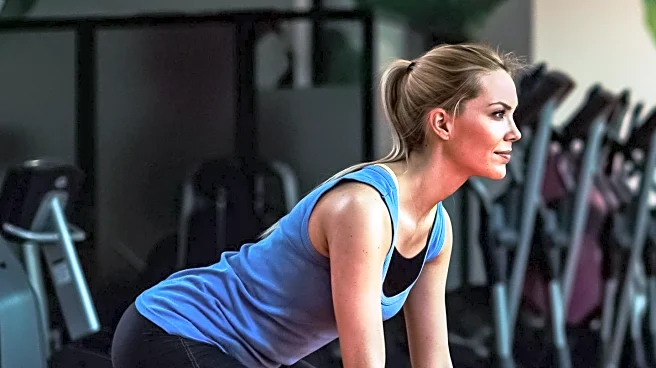Rapid Read • 8 min read
Pelvic floor physical therapist Leanne O'Brien emphasizes the importance of strengthening the pelvic floor to improve quality of life, particularly for those experiencing incontinence or pain. According to the National Association for Continence, over 25 million adult Americans face temporary or chronic incontinence. O'Brien suggests that everyone should engage in pelvic floor exercises as a preventive measure. She highlights that menopausal and postmenopausal women are more susceptible to incontinence, but men can also benefit from these exercises, especially later in life. O'Brien recommends specific exercises such as Kegel exercises, squats, and tabletop toe taps to strengthen the pelvic floor, glutes, and core. She advises performing strength training two to three times a week, depending on symptoms.
AD
Strengthening the pelvic floor is crucial for preventing and managing incontinence, a condition affecting millions of Americans. By incorporating these exercises into regular fitness routines, individuals can enhance their pelvic health, potentially reducing the need for medical interventions. This approach not only benefits those currently experiencing symptoms but also serves as a preventive measure for others. The emphasis on holistic strength training, including glute and core exercises, ensures that the pelvic floor does not have to overcompensate for weaknesses in other muscle groups. This can lead to improved overall physical health and reduced healthcare costs associated with incontinence treatments.
As awareness of pelvic floor health grows, more individuals may seek guidance from physical therapists like O'Brien to incorporate these exercises into their routines. Fitness programs and health initiatives might increasingly include pelvic floor strengthening as a standard component, particularly for populations at higher risk of incontinence. Additionally, further research and education on the benefits of pelvic floor exercises could lead to broader acceptance and implementation in both clinical and non-clinical settings.
The focus on pelvic floor health highlights a broader trend towards preventive healthcare and the integration of specialized exercises into mainstream fitness. This shift could lead to a reevaluation of how physical health is approached, emphasizing the interconnectedness of different muscle groups and the importance of comprehensive strength training. As more people become aware of the benefits of pelvic floor exercises, there may be a cultural shift towards prioritizing these practices in daily routines, potentially reducing stigma around discussing and addressing pelvic health issues.
AD
More Stories You Might Enjoy










